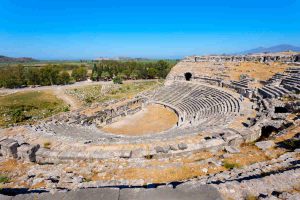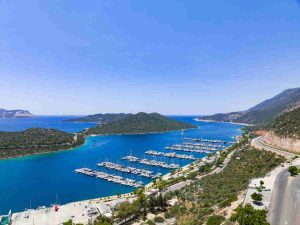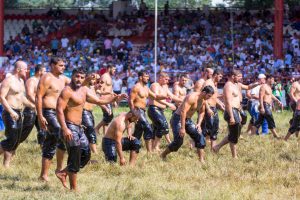Enjoying a Turkish bath in Turkey is one of the most recommended plans for those who have free time in their tour of the country, especially for those who appreciate relaxation and wellness experiences. But, do you know exactly what their origin is and what they consist of? In this post we explain everything you need to know.
What is a Turkish bath or hammam ? Origin
The great paradox of the Turkish bath is that, in reality, it is not originally Turkish, but Arabic. As we know them today, they emerged at the dawn of Islamic civilization, in the 7th century in Syria, associated with body hygiene, the socialization of men and women (separately) and also the cleansing and purification of the body before prayer, as Islam attaches great importance to this. In fact, the word hammam derives from Arabic, meaning heat.
With the rapid expansion of Arab culture, hammams also spread throughout the conquered territories, even reaching the Iberian Peninsula (Al-Andalus). Asia Minor, due to its geographical and cultural proximity, also assimilated this practice, which reached Istanbul after the Muslim conquest in 1453.
The expansion of the Ottoman Empire also helped to spread the hammams in Eastern Europe. To the rest of the territories of the Old Continent also came the knowledge of these enclosures and rituals of hygiene, so to be associated with the Ottoman Empire, they received the name of ‘Turkish baths’.
In fact, doing justice, the Arab culture was clearly inspired by the Roman thermal baths, which were known to a great extent because of their prevalence in the territories dominated by the Byzantine Empire. In these Roman thermal baths the concept of hygiene and relaxation based on the contrasts of heat and cold, fundamental in the hammams, is already present.
Operation of a hammam or steam bath
The hammams are closed enclosures, in some cases subway, and their operation follows a more or less standardized ritual. First of all, you enter the changing room to undress (usually keeping a short bathing suit for the lower part). After that, the first hot room will allow the body to acclimatize, with high temperatures, but not as high as in a sauna: between 40°C and 50°C approximately. The first acclimatization is also helped by a first soak in equally hot water.
The next room is equally hot, even hotter if possible, but here the differential is the humidity, close to 100% to open the pores, cause sweating and expel toxins. The time spent here will depend on the heat tolerance of each person.
After that, they return to the first hot room or to another of similar characteristics, for the hygienic bath itself, with soap. And once the cleaning is finished, the cold or cooling room is accessed, with lower temperatures than the previous ones, both of the environment and of the water. Here there may be benches, showers or even pools to relax, finish removing the sweat and acclimatize the body back to normal.
The last step of the Turkish bath is optional, and it is a massage, although not exactly a relaxation massage as usual: it is a vigorous massage, which some know as a real ‘pummeling’ because of the pounding of the muscles and the crunching of the joints, performed by professional tellak and for which not everyone is prepared.
Now that you know what a Turkish bath is and how it works, you just have to visit one and enjoy the experience, something we told you about in another post of this blog.



